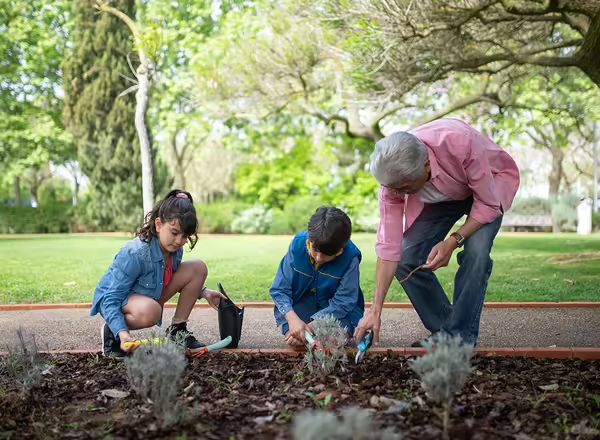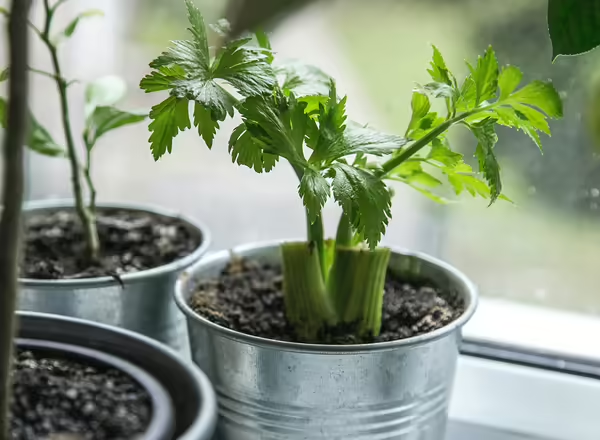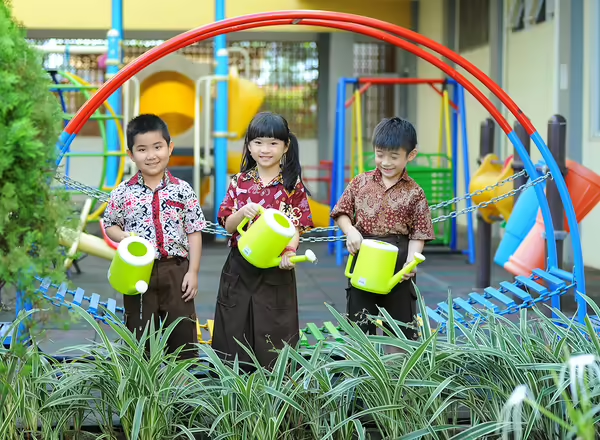
Choose a site and get permission to use the space. Of course, you want a site with sun, good soil, and drainage and probably most important of all, close to water. If your site is on school grounds, there are probably outside faucets available. Have your school engineer check to make sure they are working.
If your school or site does not have any green space, you may choose a site on a nearby vacant lot or partner with another organization. You may have to check with your local city official to get permission to garden on the lot. Finding water can be a problem for a vacant lot garden. Many towns will allow you to access a nearby fire hydrant for water. Check with your local municipality.

Involve everybody as you make decisions about the garden. Choose what flowers and vegetables to plant and where they will be planted. Remember, this is "your" garden.
Don’t get overwhelmed with things to do in the garden. Take breaks and reassess between activities and seasons.
Make sure you know what you are to do in the garden and the time required for each garden visit. Visit your garden at least one to two times a week to care for your plants.

Grow veggies and flowers you like. Look through garden catalogs and cut out favorite vegetables and flowers. Start with crops that quickly mature. These include cool season crops like lettuce, radish, green onion, and kale. Good choices for warm season crops are bush bean, pepper, tomato and zucchini.
Choose easy-to-grow flowers like alyssum, snapdragon, marigold, zinnia, cosmos, and sunflower. Additionally, many herbs are easy to grow, and the bonus is that they support pollinators. Start your pollinator garden today using tools on our website.

If your school or site doesn’t have space outdoors, green onions, radishes, lettuce, and herbs can be grown in a sunny window in plastic pots or a heavy-duty quart or gallon freezer bag.
Everybody should have their own space in the garden. A 4' x 4' area is a nice size to begin with or at least have a space for your classroom.

Don’t let adults do everything for you in the garden. Direct the kids without doing. You can do most garden tasks with gentle guidance from adults. Do it yourself!
Eat the food you grow. Have a salad party or help prepare a recipe using "your" vegetables.

Create a journal of your gardening experience. A journal could contain a map of the garden; what seeds were planted; what the weather was; pictures of what flowers were grown; who visited the garden; bees, bugs, birds & butterflies that were seen in the garden; and photos of the vegetables that were harvested.
It can be very discouraging to grow nice ripe, red, juicy tomatoes and then have them disappear overnight. Here are some tips to help reduce vandalism:
- Reserve garden space in the school garden for neighbors who live around the school.
- Hold an "Open House" and invite neighbors to see what you are growing.
- Visit your garden as often as possible. Recruit your parents and other students to work on Saturdays in the garden with you.
- Plant extra vegetables and flowers for the unwelcome visitors.
- Ask nearby neighbors and local police to keep an eye on the garden.
- Plan a gathering space in the garden for everybody to gather for gardening activities such as workdays or a harvest festival.
- Repair damage or graffiti as soon as possible.